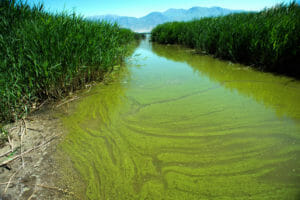
Internet of Things (IoT) technologies can enhance the operating models and efficiencies of utility companies, particularly those involved with water and sewage. Water utility companies are no stranger to IoT technology, with numerous deployments of smart-grid and smart meters throughout the world. IoT technology is developing fast, and the newest range of sensors and comms technologies have the potential to transform the industry.
Water Quality
Advanced IoT sensors (also known as Smart Water solutions) allow detailed, accurate and real-time analysis of water systems; including potable water, waste-water and waterways.
IoT sensor technology enables utilities to monitor the following parameters remotely:
- Dissolved oxygen
- ORP (oxygen reduction potential)
- pH
- Temperature
- Turbidity and suspended solids
- Nitrate sensors
- River and water levels
- Monitoring river flow and streamflow with IoT
- Biological analysis (i.e. coliforms and blue-green algae)
Measuring variables of this type allows organisations to develop real insights into water quality at a high level, over a significant area – at a reduced cost.
Utility companies are increasingly focusing on metrics such as turbidity and suspended solids – and the impact these items can have on the treatment and filtration process. Increased run-off, flooding, erosion and landslides can drastically increase turbidity levels in water systems – which can be challenging for utilities/cities.
Many companies don’t realise it is also possible to measure bathing water quality and coliforms with IoT technology. The data collected in this manner can be used to provide visual indicators, in real-time, where it is safe to bathe.
Flood Management
The unpredictability of weather and climate-related issues have increased the frequency and severity of floods due to heavy rainfall.
IoT sensors can accurately monitor river levels, river flow and similar parameters that can be used as an early warning for flood risks, and provide rich-data sets that can be used for analysis.
The ability to accurately measure waterways and rivers, including ungauged catchments with IoT, is an area of particular interest to utility companies and local authorities.
More than just metering
IoT is no longer confined to just metering (electricity or water); accurate IoT sensors are available for in-depth water analysis (potable and waste-water), water levels, coliforms and algae, ions and nitrates. Smart Water solutions can be deployed within utility companies, cities, municipalities and industrial sites to improve performance, optimise infrastructure investment and reduce operating costs.
Speaking at the Sensing in Water conference, Alison Fergusson, an Associate Director at Ofwat, commented:
I can’t think of a place where water companies wouldn’t want to have a bit more information, be able to communicate with customers and let them know that they really understand what’s going on, right down to their locality.
Alison continued:
The cost of monitoring and having real-time data has really come down. Now the water industry has a chance to use the information that we’ve got on assets that have been out there for a while, but which up till now have just been invisible.
Agriculture and Fertiliser

Aquatic ecosystems and rivers can be significantly impacted by the presence of nitrates and phosphates in the watercourse. The presence of these chemicals can play havoc; impacting algae, dissolved oxygen and fish life.
Many utility companies are using IoT to measure ORP (Oxygen Reduction Potential) and Dissolved Oxygen (DO) as an indicator of aquatic health. Developments in sensors technology are enabling the measurement of nitrates, phosphates and algae with IoT.
IoT communication for water utilities
When deploying IoT sensors, water utility companies will have to consider the most appropriate communications technology. Companies will give consideration to cost, performance, coverage, security and power consumption.
Utility companies may opt for an LPWAN technology such as LoRaWAN, while others will prefer traditional 3G/4G technologies – some will continue to use their dated, low bitrate telemetry systems.
IoT and Cloud for water utilities
With the potential for significant volumes of data, we recommend that utility companies adopt Cloud technologies as part of their IoT strategy. Cloud technologies (such as Microsoft Azure) not only offer scalable infrastructure for data storage, but this extends to analysis, machine learning and AI applications that may uncover new insights or optimise operating models.
We work with Microsoft Azure and Microsoft’s range of Azure Cloud services to develop cost-effective, high-performance solutions for utility companies and similar organisations looking to embrace IoT, and unlock the value of the data.
Find out more
If you would look to learn more about how IoT, Azure and sensors can bring value to your utility companies or organisation, please speak to our solutions team. The solutions team can be reached by calling +44 1624 777837, sales@mtg.im or submitting our Request a Quote form. Manx Technology Group is a Libelium Partner – able to supply their full range of Smart Water and IoT solutions.
More information
If you would like to learn more about our products and services, request pricing, or discuss a project requirement - you can MTG using the details below. Alternatively, you can e-mail sales@mtg.im for more information.

